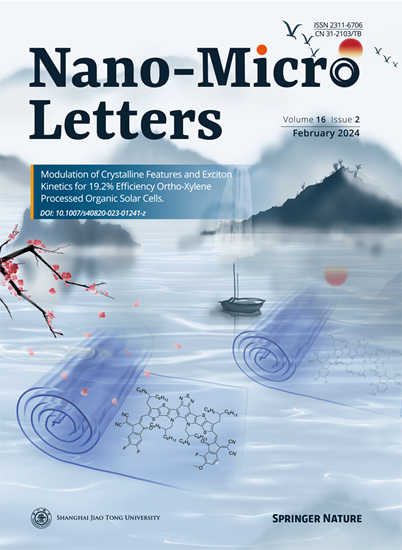A Synchronous Strategy to Zn-Iodine Battery by Polycationic Long-Chain Molecules.
IF 36.3
1区 材料科学
Q1 Engineering
引用次数: 0
Abstract
Aqueous Zn-iodine batteries (ZIBs) face the formidable challenges towards practical implementation, including metal corrosion and rampant dendrite growth on the Zn anode side, and shuttle effect of polyiodide species from the cathode side. These challenges lead to poor cycle stability and severe self-discharge. From the fabrication and cost point of view, it is technologically more viable to deploy electrolyte engineering than electrode protection strategies. More importantly, a synchronous method for modulation of both cathode and anode is pivotal, which has been often neglected in prior studies. In this work, cationic poly(allylamine hydrochloride) (Pah+) is adopted as a low-cost dual-function electrolyte additive for ZIBs. We elaborate the synchronous effect by Pah+ in stabilizing Zn anode and immobilizing polyiodide anions. The fabricated Zn-iodine coin cell with Pah+ (ZnI2 loading: 25 mg cm-2) stably cycles 1000 times at 1 C, and a single-layered 3 × 4 cm2 pouch cell (N/P ratio ~ 1.5) with the same mass loading cycles over 300 times with insignificant capacity decay.多阳离子长链分子同步锌碘电池策略研究。
含水锌碘电池(zbs)在实际应用中面临着巨大的挑战,包括锌阳极侧金属腐蚀和猖獗的枝晶生长,以及阴极侧多碘化物的穿梭效应。这些挑战导致循环稳定性差和严重的自放电。从制造和成本的角度来看,采用电解质工程技术比采用电极保护策略在技术上更可行。更重要的是,阴极和阳极的同步调制方法是关键,这在以往的研究中经常被忽视。本研究采用阳离子聚丙烯胺盐化(Pah+)作为ZIBs的低成本双功能电解质添加剂。阐述了多环芳烃+在稳定锌阳极和固定多碘离子中的同步作用。制备的Pah+ (ZnI2负载为25 mg cm-2)硬币型锌碘电池在1℃下稳定循环1000次,而单层3 × 4 cm2袋状电池(N/P比为1.5)在相同质量的负载下循环300次以上,容量衰减不明显。
本文章由计算机程序翻译,如有差异,请以英文原文为准。
求助全文
约1分钟内获得全文
求助全文
来源期刊

Nano-Micro Letters
NANOSCIENCE & NANOTECHNOLOGY-MATERIALS SCIENCE, MULTIDISCIPLINARY
CiteScore
32.60
自引率
4.90%
发文量
981
审稿时长
1.1 months
期刊介绍:
Nano-Micro Letters is a peer-reviewed, international, interdisciplinary, and open-access journal published under the SpringerOpen brand.
Nano-Micro Letters focuses on the science, experiments, engineering, technologies, and applications of nano- or microscale structures and systems in various fields such as physics, chemistry, biology, material science, and pharmacy.It also explores the expanding interfaces between these fields.
Nano-Micro Letters particularly emphasizes the bottom-up approach in the length scale from nano to micro. This approach is crucial for achieving industrial applications in nanotechnology, as it involves the assembly, modification, and control of nanostructures on a microscale.
 求助内容:
求助内容: 应助结果提醒方式:
应助结果提醒方式:


